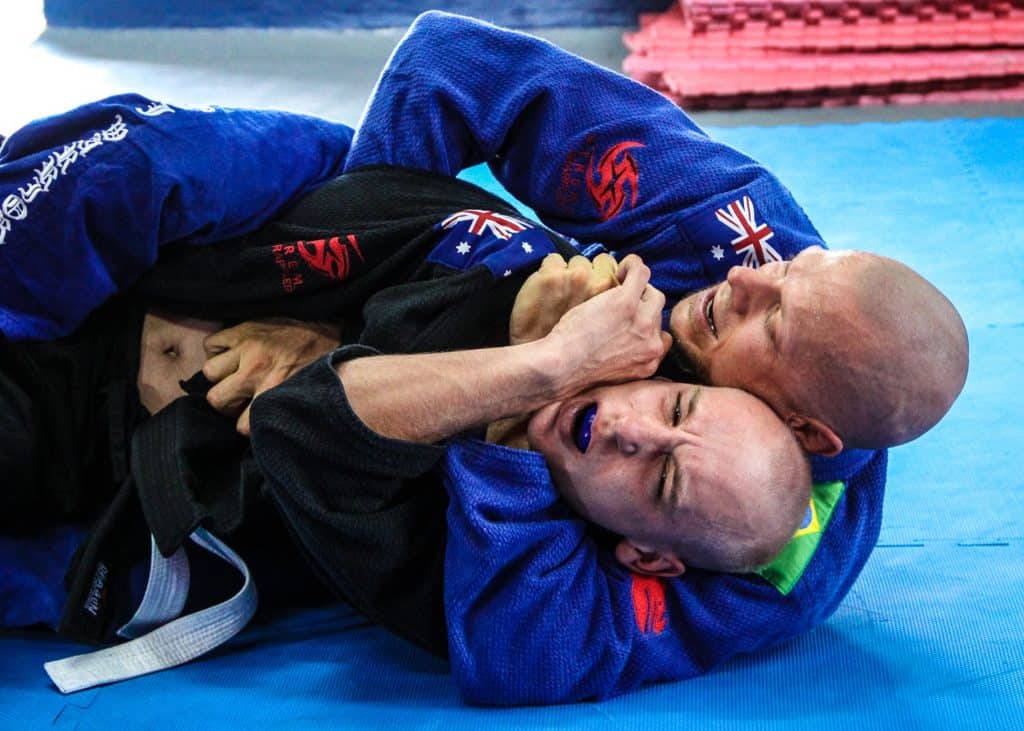Training GI or no-GI has become an age old debate in Brazilian Jiu-Jitsu circles, and it’s a good question really. Time is important to us. Work can get in the way of training, or in some cases training could get in the way of work. Then, what’s a more efficient way of investing into training? Should we focus on GI training or the no-GI? Which one is better?
If you are a beginner you might want to check out this article about What to wear to NoGi BJJ.
We’ll go for the diplomatic approach and say that they’re just different. There’s no question about that. Proponents of no-GI usually go with the argument that training for grips that are non-existent without a jacket is a waste of time. But then, a massive amount of competitors train in the GI giving GI competitors more when it comes to competition.
When it comes to grappling, the grip you’ve got is going to make all the difference in the world on whether or not you’re going to control your opponent or not. If you’ve got no grips, you can do next to nothing unless it’s a huge skill difference.

Posture control grips
- The most characteristic grip in the GI is the collar grip. The collar grip allows you to control the posture of your opponent, standing or on the ground. You can move them left, right, forward, backwards. Compared to the no-GI grips, the collar grip in the GI is a bit more versatile. In essence it’s like having both an underhook, over hook or collar tie grip at the same time depending on how you use it and how your opponent defends.
- Cross-collar or mirror grip; you’ve got the option of grabbing the collar either on the mirror side or the cross-side. The difference this makes is that you control different shoulders. The cross-collar gives you more control on the cross side. It’s basically a two-on-one grip on the cross-side shoulder because you’ll probably be controlling the cross side sleeve as well. If you’re doing standup judo or GI wrestling this will give you a really effective kouchi-seoinage combo. Cross collar chokes are there as well. You can counter the single leg with a loop choke for example, and many others. It effectively does not exist without the kimono. Closest thing to the cross-collar is the armdrag.
- The belt grip; the belt grip is a really powerful grip both standing and on the ground. In the guard, the over-the-head belt-grip can keep your opponent’s head glued to the mat. Without the GI you can go for overhook or underhook control. Standing it gives you hip throw, kosoto and ouchi combinations.
- The lat grip(both GI and no-GI) Whenever your opponent doesn’t whizzer your underhook you’ve got a chance to take their back. It’s this grip that’ll make that happen. In the GI you can easily grab the belt and pull yourself on top. However, in the no-GI you can grab the lat to climb on top. The lat is the muscle behind the armpit on the back. It’s a really effective handle that everyone should use.
Sleeve-Post control
Now, sleeve grips are something that can’t really be mimicked without a GI. They’re very BJJ specific and you can do guards such as the spider or De la Riva. They allow for greater distance management that’s simply not possible if you haven’t got a jacket.
The main purpose of the sleeve grip is killing the post. If you control your opponent’s arm he won’t be able to post out of sweeps. In the no-GI you can do something similar. Grab the wrist. However, the further your opponent moves from your grips the weaker they get.

Unorthodox and pant grips
Pant grips make all the difference in passing. Cuff-grip leg drags or toreandos are the easiest thing in a world if you’ve got no jacket and you’re passing your partner’s guard. But it’s not just a grip difference. Tournaments like the ADCC allow the use of knee-torque submissions which make the guard a much different animal from the one in the GI.
For reference’s sake, the last thing we’ll mention is the lapel grip that GI specialist use to tie up posture and the legs at the same time. A couple of years ago, Keenan Cornelius used the lapel guard to win numerous tournaments boasting the effectiveness of the grip.
Conclusion
Both no-GI and GI can give you a new dimension to your game. Try both out. See what works best for you. Ultimately, it’s a matter of personal preference.
